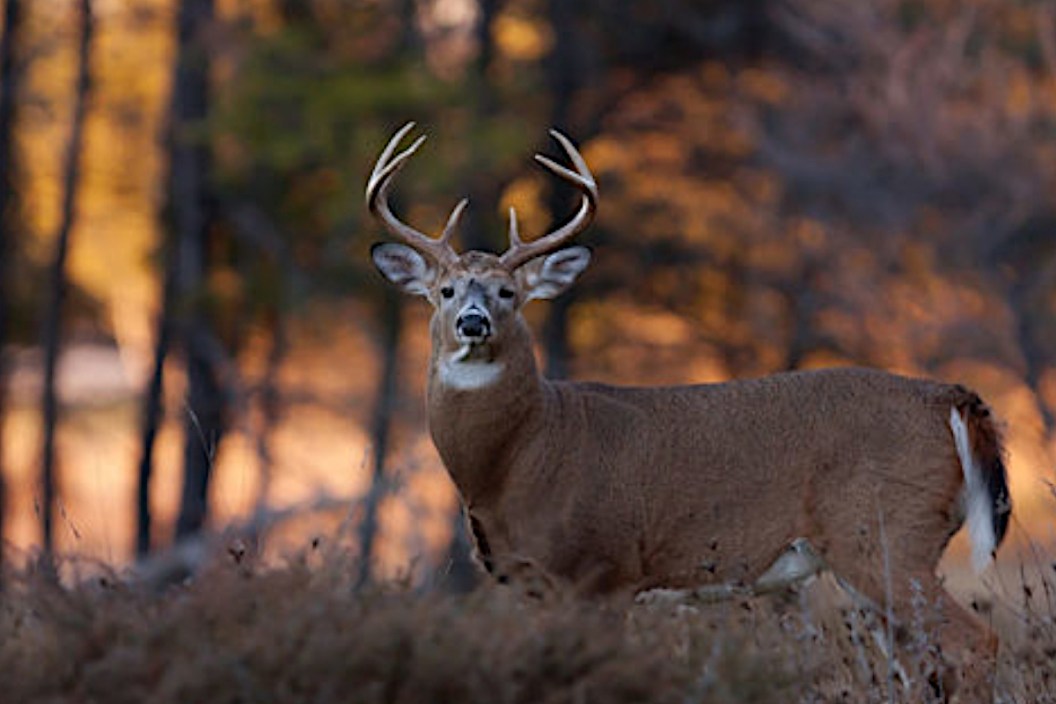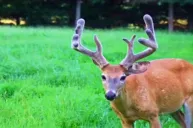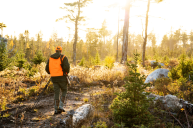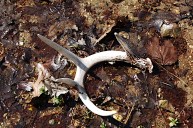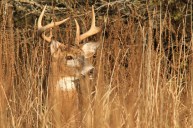These scouting tips will help you avoid costly mistakes.
Pre-season scouting for fall hunting is a sure-fire way to ensure your best odds of success once hunting season finally does roll around.
While summer and spring scouting can give you valuable clues on deer movement and help you locate a new hunting spot for the fall, there are some common mistakes you'll want to avoid.
By avoiding these mistakes, you'll get the most out of your scouting trips and will be ready to roll by the time opening day finally arrives.
Disregard old or single pieces of sign
Some hunters might see an old, weathered rub and take that deer sign as an indicator that a deer was here, but that it has long since moved on. You might think the same of old, extremely weathered shed antlers. Or maybe it seems like that rub or scrape was just made randomly. That does happen.
Sometimes there is no rhyme or reason to where deer sign shows up. But just because the sign you're seeing seems random or isn't fresh, that doesn't mean the spot is played out.
A good deer hunter realizes that any sign is good sign. Sometimes a spot won't hold deer until the hunting pressure becomes heavy. Then, suddenly it's a sanctuary for a few weeks until gun season is over. In fact, it's those isolated areas that big bucks sometimes purposely seek out.

Years ago, I read a story about a monster whitetail buck that hung out all summer in the same area. It was always out in the same food sources all summer long, often in full view of hunters driving by. Every sportsman in the area knew about this deer and once archery season arrived, everyone was after it.
But deer season after season came and went, and no one could pattern the deer. No one saw the buck until the offseason summer months.
It might have remained a mystery until one year the buck was hit by a car while crossing a highway. It happened in a spot that didn't make much sense to local hunters, mostly because the deer had never once been seen or photographed on the other side of that highway.
A hunter familiar with the buck got curious and went into a small patch of woods in the median between the two highways where the buck was hit. Sure enough, he found a small bedding area and multiple trees ripped to shreds by the buck's massive antlers.
A large oak in the median provided him all the acorns he would need while he waited for the season to end.
This buck was certified genius. He found the one place no one would ever think to look for him. No wonder no deer hunter could find him!
Another example, in the early 1990s, a monster non-typical known as the Minnesota Monarch showed up in a man's backyard every February. His sheds were found during this time and measured over 300 inches. But no one ever saw this buck while hunting! That means he had one heck of a hiding spot!
The point here is, they don't get that big without being smart. That is why you can't really discredit anything. The tiniest clue may hold the key to finding a buck's secret hiding spot. Every piece of sign you come across in the woods is telling you something about the crafty deer that made it. The challenge is in deciphering it. Think of every sign of a buck as another piece of the puzzle. You just have to figure out how they all fit together.
Waiting too late to scout
https://www.youtube.com/watch?v=tv4kHWH072o
While it is possible to shoot a mature buck in a new area on short notice and a quick scouting trip, your odds are extremely low. You simply cannot afford to wait until a week before the season to start your scouting for the year.
You want to pattern the deer, but the problem many hunters have is that the deer pattern THEM. Bucks usually let their guard down a lot more during the summer months, but as fall is approaching, the deer know humans will be hunting them. If you show up at the last minute, it's like putting up a huge sign that says: "Hey, I'll be hunting here soon!"
You must get into the woods this time of year and get your stand locations finalized. Get your treestands set up and then stay away from the area until it is time for that first early season hunt.
Now, I know that there are some issues with this. If you're hunting on public land, there is a very real possibility someone else will scout late and inadvertently walk by your stand. That can mess up months of planning. That's why you have to be scouting for sign of other hunters as much as you're scouting for signs of deer. It's often blatantly obvious from spent shells, hastily-constructed blinds and discarded doe pee bottles that someone else has been hunting this spot. Time to find a new one.
Look for the most remote hunting area possible. If you have to hike two to three miles in, your odds are probably going to be better.
If you are fortunate enough to have access to private land, don't put your hunting gear away once the season is done and wait until next year. Do your season scouting in late winter.
Sometimes it pays to go as soon as all the late seasons have ended, because the rut sign from the previous year is still fresh and travel routes are still obvious. You might be amazed at the subtle things you see this time of year that you missed in previous years.
Scouting TOO much
Along the same lines of late scouting, another mistake is simply scouting for deer too much. I get it. Trail cameras are totally addictive in the summer months. It's like Christmas in July every time you check your camera to see what's growing. I usually have upwards of five cameras in the woods during my summer scouting efforts. It is hard to go months without checking them, but I know it will pay dividends come deer hunting season.
In fact, last summer I only checked my cameras twice! This is why trail cameras with solar panels and cellular capabilities are really catching on with the pros. It allows them to continuously scout their hunting areas without ever letting big game animals know they are there. They slowly become more comfortable with using those travel corridors when they sense few signs of humans. That means more venison in the freezer at the season's end.
When I do set up and check trail cameras, I spray myself with cover scent before I go. I also spray down the camera after I touch it. It sounds silly, but I've noted more pictures and more bucks after doing this, so it must have some effect!
I know, deer scouting like this can really test your patience. But trust me, it will be worth it when you finally swap those cards and see all the big bucks that are now super comfortable using the deer trails and feeding areas because there are no humans around.
One big thing to do is to leave some areas completely untouched. It can really pay off to find a bedding area and then never enter it. Especially if you're on private land. When things start to heat up during firearms season, the big bucks will likely seek out that place as sanctuary.
While that doesn't guarantee a shot at the top buck on your hit list, you can at least feel more comfortable that no one else will shoot him either. Ideally, you want to find a perfect stand site on trail in or out of that area. This goes back to what we said about scouting early. Find your stand spot, set up and then leave it alone until the season starts.
If all goes according to plan, that monster buck won't realize you're hunting in the area until the arrow is speeding towards him. By then, it's too late.
Speaking from my own experience, two of my biggest bucks were shot from the same ground blind. The first buck I shot the first time I ever sat in that spot. He was taken totally by surprise. The second buck I shot 12 years later, again, on my first visit to that blind all year. Deer DO notice if you're in an area frequently or not!
The time is NOW
Many hunters make deer scouting more complicated than it really needs to be. Ever heard the phrase "work smarter, not harder?" It applies to almost everything in life, but especially to hunting scouting.
It's not just for deer either,. Turkey hunters can maximize their chances at a gobbler next spring by utilizing many of these same tips for spring turkey hunting. Do not forget about the fall turkey seasons either. It is the perfect time of the year to put a late season bird in the freezer for Thanksgiving.
So, if you haven't already done your scouting for the fall, what are you waiting for?
For more outdoor content from Travis Smola, be sure to follow him on Twitter and check out his Geocaching and Outdoors with Travis YouTube channels.
NEXT: THE GREAT BIG OKLAHOMA DEER HUNTING GUIDE
WATCH
